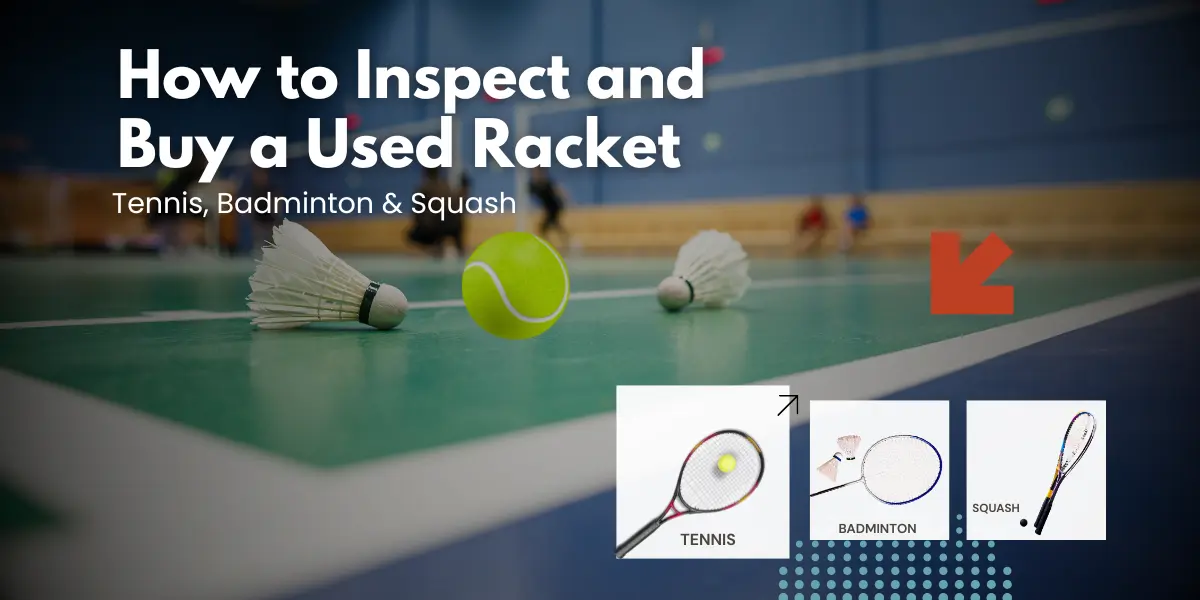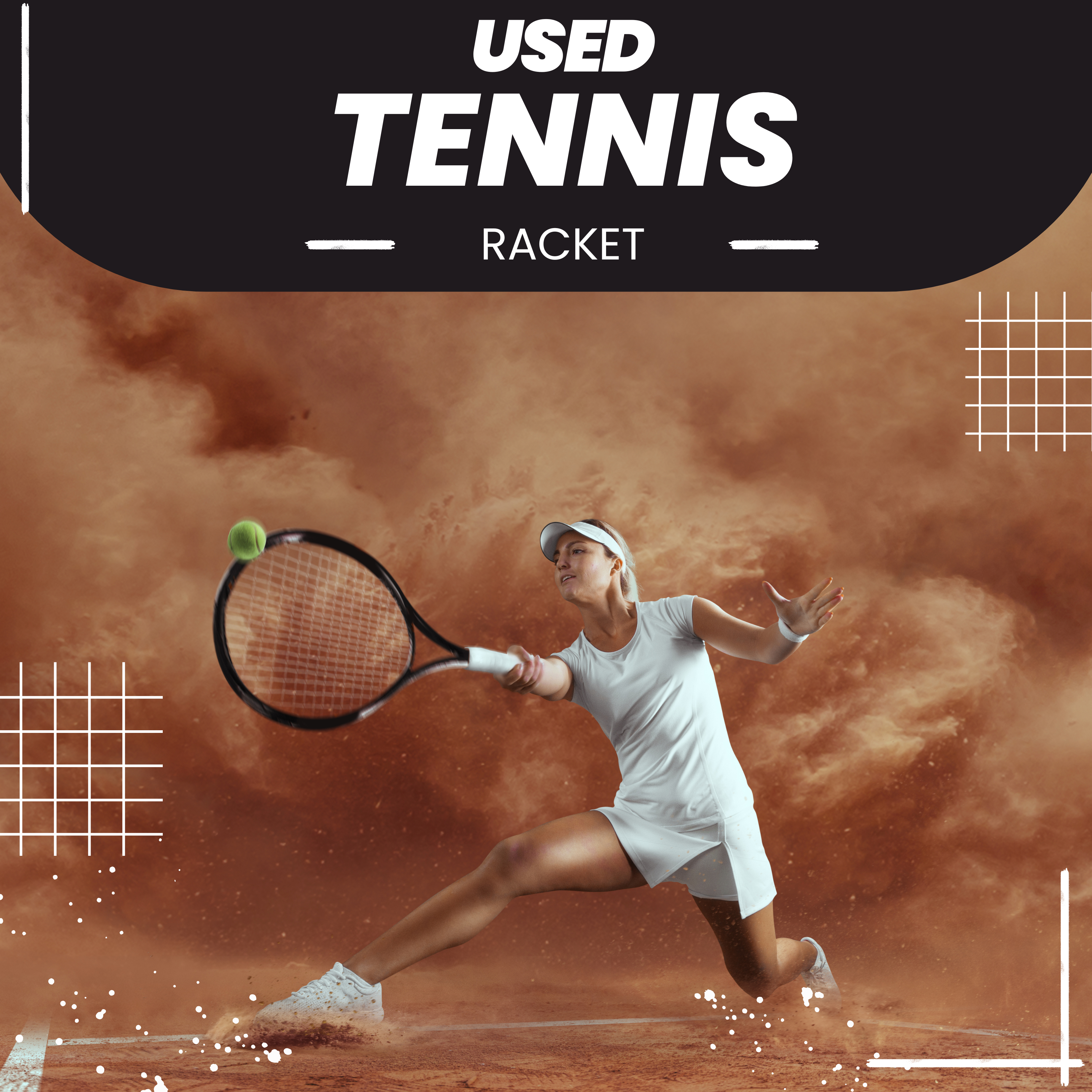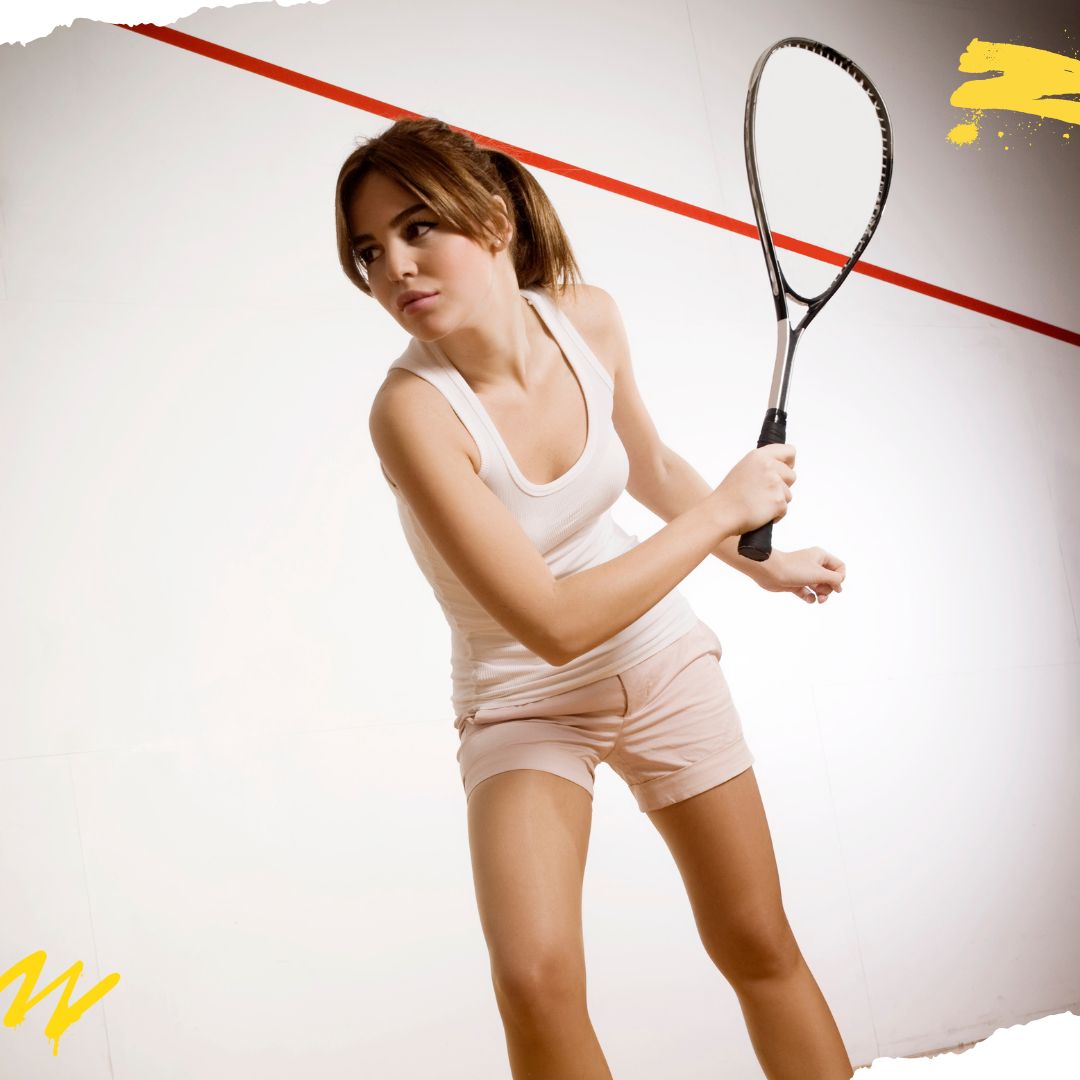Buying a used racket can save you a lot of money and even help the environment. In fact, buy a used racket instead of a new one is extremely common, even among professional players. A well-cared-for racket can perform almost like new for many years. However, buyer beware: you need to know what to look for to avoid damaged goods or counterfeits. This comprehensive guide will walk you through inspecting a used racket’s condition, choosing the right type for your play style, and making a smart purchase. It’s written for budget-conscious beginners to intermediate players across tennis, badminton, and squash who want quality gear without breaking the bank.
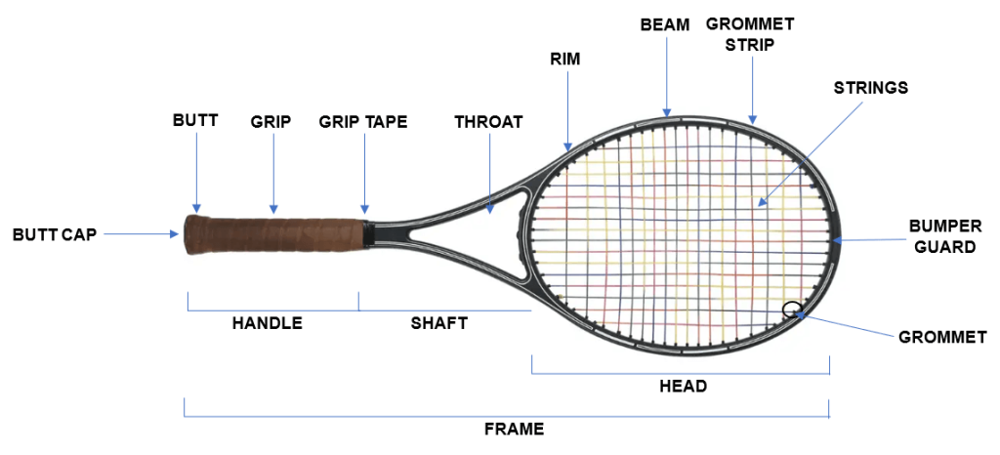
Why Buy a Used Racket?
Buying used has plenty of advantages. Not only can you save a lot of money by getting high-end models at a fraction of the cost, but it’s also eco-friendly since you are extending the life of sporting equipment. Additionally, a well-maintained racket can perform almost like new.
However, caution is essential. Not every used racket is a good deal. You need to inspect carefully to avoid damaged or counterfeit rackets. This extra effort ensures that your purchase pays off in the long run, both financially and in terms of performance.
1. Inspecting the Frame
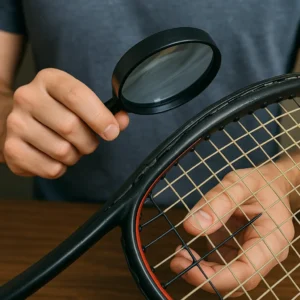
Check for Cracks or Warping
The frame is the most critical part of any racket. Cracks and fractures, even small hairline ones, are major red flags. Warping can distort performance and is usually irreversible. Cosmetic paint chips are common and usually harmless, but cracks are not.
To be safe, run your fingers along the frame to feel for any hidden damage. If it feels uneven, soft, or shows signs of repair, it’s better to skip that racket. The frame must be solid to deliver reliable performance.
Examine the Bumper Guard and Grommets
For tennis and squash rackets, inspect the bumper guard. Heavy wear could indicate the racket saw intense play and might have endured impacts. Badminton rackets, while different, have thin grommet strips. Check these closely for cracks or missing pieces.
Broken or missing grommets can damage strings and weaken the frame. Although grommets are replaceable, severe damage here often signals deeper structural issues.
2. Inspecting the Grip and Handle
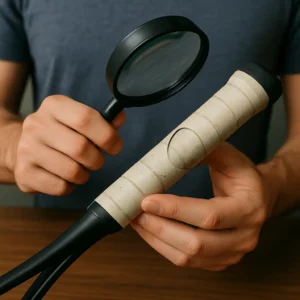
Grip Condition
The grip tells you a lot about the racket’s use. If the original grip is heavily worn, it signals heavy usage. While grips are easy and cheap to replace, a very old grip suggests the racket saw a lot of play. For hygiene and performance, replacing the grip should be one of your first steps after purchase.
Grip Size and Handle Integrity
Grip size is important for comfort and injury prevention. Ensure the racket fits your hand properly or is slightly smaller — you can always add overgrips to increase size. Also, check for structural issues.
Squeeze the handle; it should feel solid and stable. Avoid rackets with loose butt caps or rattling noises. These are indicators of internal damage or compromised structure. For badminton rackets, inspect the cone and shaft for cracks and serial numbers to verify authenticity.
3. Inspecting Strings and Head Guard
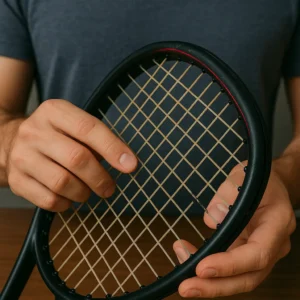
String Bed Condition
Strings wear out faster than frames. Frayed or broken strings mean you’ll need to restring, and loose tension is another indicator of age. String tension plays a major role in your game, so always factor restringing costs into your purchase decision.
Head Guard and Grommet Condition
The bumper guard and grommets protect strings from damage. If worn or broken, they could lead to string breakage and even frame damage. Inspect for sunken grommets as these can be a sign of frame fatigue.
While these parts are replaceable, their condition gives you valuable insight into how much the racket was used. The better preserved they are, the less likely the frame has sustained hidden stress.
String Tension Test
Tap or pluck the strings. A dull, low sound means low tension. Although string condition isn’t necessarily a deal-breaker, expect to restring most used rackets to ensure optimal performance. Fresh strings provide better feel, control, and power.
4. Choosing the Right Racket for Your Play Style
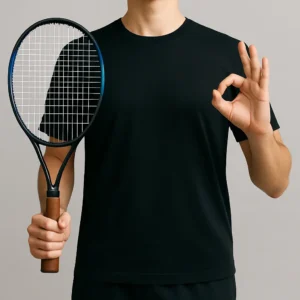
Choosing a racket isn’t just about condition. It’s equally important to select one that suits your playing style and skill level. Buying a high-end racket that’s too advanced for you can hinder your progress.
5. Considering Age and Original Price
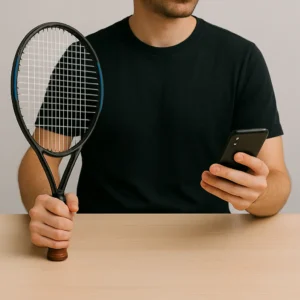
Not all used rackets offer equal value. Modern rackets from the last 5–10 years are generally safe buys if well-maintained. However, very old rackets may use outdated materials or have developed weaknesses over time.
Usage history matters greatly. A heavily played racket may feel fatigued, even if it looks fine. When pricing, aim for 50–70% of the current new price if the racket is in excellent condition. Don’t hesitate to negotiate, especially if the racket needs new strings or grips.
Tennis Rackets
Beginners should opt for oversized, lightweight, and forgiving rackets. These offer larger sweet spots and are easier to handle. Intermediate players benefit from mid-plus heads and moderate weight, striking a balance between power and control. Advanced players often prefer smaller heads for precision and control.
Badminton Rackets
For badminton, beginners should seek medium weight, flexible shafts, and balanced rackets. These make learning strokes easier and reduce strain. Intermediate players can tailor their choices based on their style — aggressive players may prefer head-heavy rackets for smashes, while defensive players might choose head-light rackets for speed.
Squash Rackets
Beginners should look for heavier, head-light rackets to help stabilize their shots. Intermediates can go for lighter, balanced options that provide both power and maneuverability. Always research the model you’re considering to ensure it aligns with your playing needs.
Unfortunately, the racket market (especially online) has its share of counterfeit products – usually with high-end brands. When buying used, especially from individual sellers or less-known websites, keep these authenticity tips in mind:
- Check serial numbers and holograms.
- Examine logos and branding for inconsistencies.
- Compare weight and feel with genuine models.
Always buy from reputable sellers and avoid deals that seem too good to be true. If possible, compare with an authentic model in hand.
Key Questions to Ask Sellers
Before buying, ask these essential questions:
- How old is the racket and how much has it been used?
- Why are you selling it?
- Has it ever been damaged or repaired?
- Is it authentic?
- What strings are on it and when was it last strung?
- Has the grip been modified?
- Are accessories included?
- Can I test it or see more photos?
Getting honest answers will help you avoid surprises and ensure you make an informed purchase.
The Importance of Testing a Racket Before Buying
When buying a used racket online, testing it beforehand is rarely possible. This makes post-purchase inspection and on-court testing absolutely critical. Once the racket arrives, begin by carefully examining it for any hidden defects or shipping damage. Look for cracks, dents, worn-out grommets, loose butt caps, or signs of tampering that may not have been visible in the online listing. These flaws can directly affect both the durability and performance of the racket. After the visual check, the real test starts on the court. Begin with simple hits and gradually move into a variety of shots—serves, volleys, smashes, and defensive returns. Focus on how the racket feels in your hand, its balance, and whether it produces any unusual sounds or vibrations on impact. A dead or overly soft string bed, rattling inside the handle, or uncomfortable grip could indicate deeper problems.
While minor adjustments like restringing or replacing grips are normal, structural issues should not be ignored. If serious problems arise during testing, act fast. Contact the seller or the platform’s customer support to resolve the issue. Sites like SportsGalaxy.in offer buyer protection, ensuring you don’t get stuck with a defective product. Ultimately, post-purchase testing is your final safeguard to confirm that the racket meets your expectations. It’s a small effort that ensures confidence in your investment and prevents future regrets.
Conclusion
Buying a used racket is a smart way to get quality gear without breaking the bank, but it requires careful attention to detail. From inspecting the frame, handle, strings, and grip to verifying authenticity and testing performance, every step plays a role in ensuring you make the right choice. Especially when shopping online, being thorough with your post-purchase testing is essential to avoid disappointment.
With the right approach, used rackets can offer excellent value and performance similar to new ones. At SportsGalaxy.in, we aim to make your buying journey safe, informed, and rewarding. Use this guide as your trusted checklist to shop confidently and find the perfect racket that matches your needs and elevates your game.

